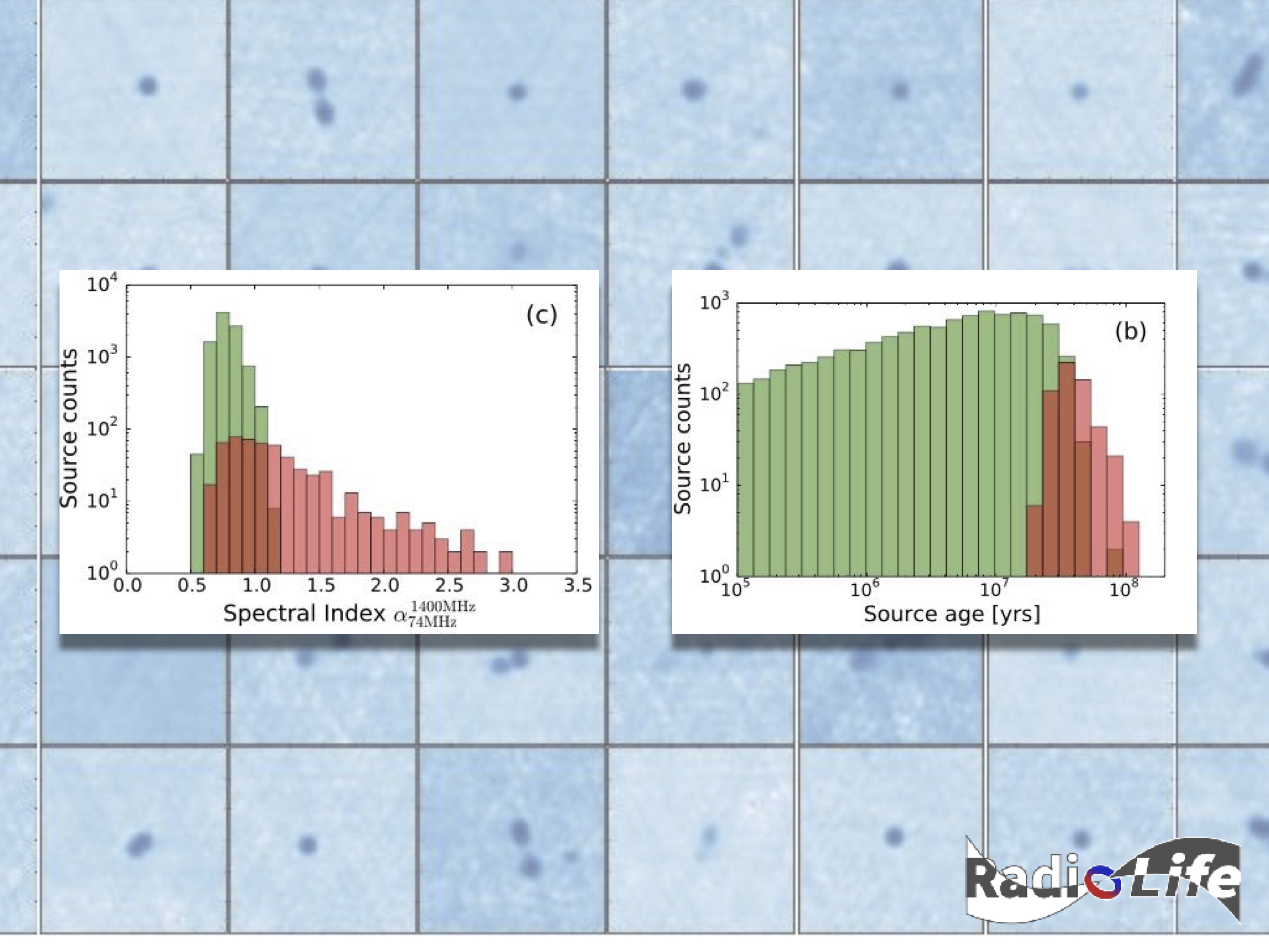Daily Image
11-07-2017The hidden life of a radio galaxy
| Submitter: | Leith Godfrey and Raffaella Morganti |
| Description: | Also radio galaxies have a cycle of life. They can get old and die, but in some cases they can also be reborn. Why is this interesting? First of all, we still don't know exactly what determines this cycle. Furthermore, the way the source evolves determines their impact on the surrounding medium, influencing also the life of the host galaxy. The phase in which a radio source is dying can be best explored at low radio frequencies, where low-energy electrons can radiate for longer times. This is, therefore, an ideal task for LOFAR. As part of the ERC project RadioLife, we are exploring this and a milestone has been obtained with the publication of the paper presenting simulations for building “mock” samples of radio sources for which different evolutionary scenarios can be explored. These simulations are essential for comparing with, and interpreting, the observations. These results are presented in the paper "On the population of remnant FRII radio galaxies and implications for radio source dynamics" by Leith Godfrey, Raffaella Morganti and Marisa Brienza accepted for publication on the Monthly Notices of Royal Astronomical Society (see also https://arxiv.org/abs/1706.05909 ). The figure shows two histograms from the paper, illustrating the distribution of the spectral indices and ages of the sources in one of our mock catalogues obtained under the assumption of expansion of the source in the remnant phase. Green bars represent active sources, red bars represent remnant sources. The important new findings is that not all remnant sources are ultra-steep spectrum, unlike what always assumed in the past. Thanks to this new tool, we are now exploring the LOFAR data: watch this space for more results! |
| Copyright: | ASTRON |
| Tweet |  |
